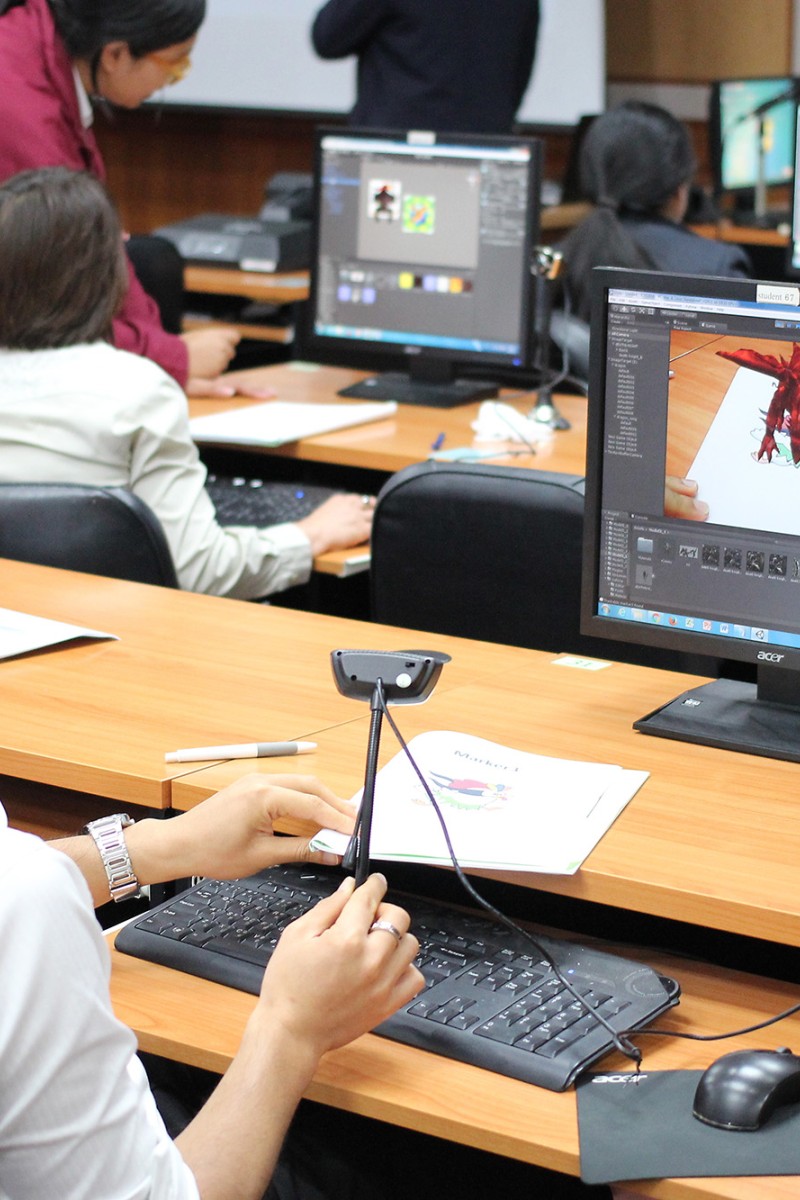
Technology like augmented reality is changing the way we study in class
Technology like AR is being used more and more in schools – and the way teachers are conducting their lessons are changing because of it

When you think of classroom-based learning, a couple of things come to mind: lecture-style teaching, lots of note-taking, and plenty of textbook reading. After class is over, you leave. The only interaction you might have is when you answer questions, or if you have to work in pairs or groups. However, there are many students who learn best with a different sort of learning style, like tactile, visual, or audio. One of the ways that different learning styles are being encouraged in the classroom is through technology like augmented reality (AR).
Learning via a screen
AR means using technology to add virtual items onto or into our actual surroundings – like seeing a Pikachu on your bed when playing Pokemon Go. One of the types of AR-based tech that could be used in a classroom is Apple’s ARKit.
Using the camera of an iPhone or an iPad, computer images – like a model of the solar system, or a model of a car – can be projected onto a real world surface and examined through the screen.
Apple claims that their ARKit “lets you build detailed and compelling virtual content on top of real-world scenes”, and enables their devices to accurately map out where it is and how it’s being held in any space. That means, rather than having virtual objects randomly float in the air in front of you, they look as if they’re actually interacting with the real world.
Game-changing hologram tech
The Microsoft HoloLens takes this a step further – rather than being confined to a screen, the HoloLens is worn like a pair of glasses, which overlays your surroundings with holograms that you can see, hear, and interact with.
This combines visual, audio and tactile learning in one, and could be a real game changer for students and teachers – imagine, for instance, using this to see how small the living quarters of a Roman slave actually were in Ancient Rome, or virtually examining the human anatomy in minute detail.
Increasing the use of e-learning
Hong Kong’s Education Bureau is collaborating with schools across the city to help bring AR into more regular use across different subjects, like geography and history, introducing more of an interactive aspect to lessons that might otherwise only rely on writing and passive learning, said a bureau spokesman.
“According to a survey completed last August, schools in general have acknowledged that e-learning has strengthened the motivation and learning ability of students,” said the spokesman. Since 2015, a total of 11 training courses related to AR and AR-learning have been organised to help teachers make better use of it in their classes.
Not useful for everyone
Vivian Lun Hiu-man, 18, said she can see the benefits of using AR in classes.
“It’s getting harder for students to be motivated by old-school teaching techniques,” said the future United States-based Chapman University student. “That’s why I think AR might help.”
Malcolm McNicol agrees. “The use of technology in class is a step in the right direction,” said the Scotland-based Herriott-Watt University student.
However, both also believe there are better and more efficient ways to teach than simply via AR, and that there shouldn’t be an overreliance on technology in classes.
“Unless it’s for something specific, I don’t think AR is the best way to teach students,” said McNicol, 20. “Teachers can use other things, like games and quizzes [to interact with students]. Technology should be used in more productive ways than just AR, like for uploading notes or recording lectures. That would be of better help to students.”
“AR is only useful, and a better learning style, for certain people,” added Lun.
“Some students, like me, still prefer to study with textbooks and notes.”
